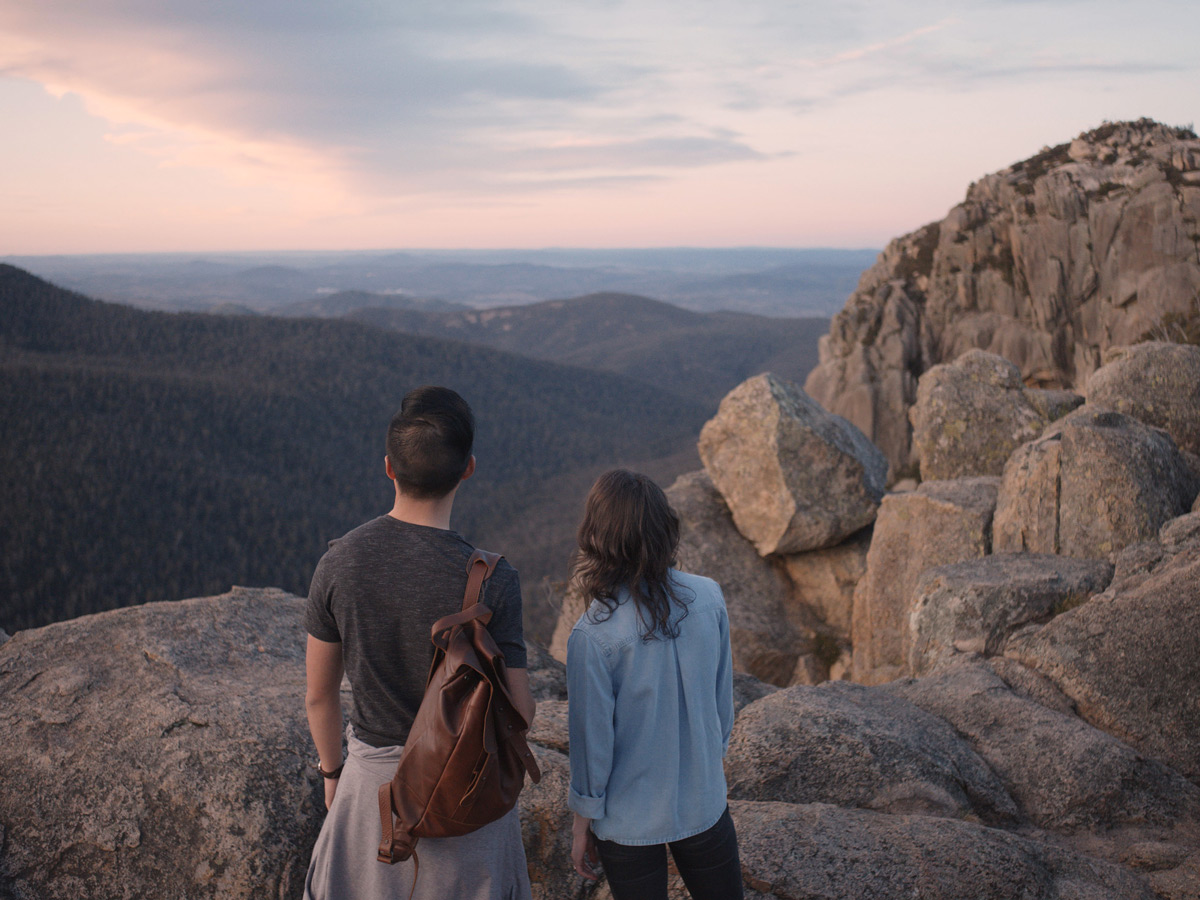20 December 2024
![]() 5 mins Read
5 mins Read

Namadgi National Park represents 46 per cent of the ACT, lying just 40 minutes southwest of Canberra City with more than 106,000 hectares of alpine, sub-alpine and mountain areas.
Since it was first declared a national park in 1984, this immensely diverse region has been a source of great inspiration for nature lovers, offering an incredible range of landscapes from grassy pains and snow gum woodlands to sub-alpine meadows and hidden fern gullies.
It’s often unexplored because visitors are unsure of what to do with something so wonderfully vast. To help, we’ve rounded up some of the top things to do in Namadgi National Park so you can make the most of your visit to this important, largely underappreciated, part of Australia’s geographically diverse east coast.

The Orroral homestead was built in the 1860s and has stood the test of time. (Image: Michael Maconachie)
Several historic homesteads lie across Namadgi National Park, retelling the story of colonial pastoralists and early recreational skiers. Filled with character, these homes are not only great photo opportunities but they tell the story of this region with every crack and crevice.
Gudgenby, for example, is a timber slab hut built in 1845. After serving time in a shipping container, it’s been beautifully restored and reconstructed near the Namadgi National Park visitors’ centre and can be viewed anytime. Audio features retelling tales of early settlers help contextualise the park before you set off to explore.
You’ll also want to look for Orroral, the park’s oldest original homestead which was built in the 1860s and can be found near the Orroral campground.

One of Namadgi’s best walks, hiking to Booroomba Rocks affords spectacular views. (Image: Visit Canberra)
If you’ve only got time for one hiking trail in Namadgi National Park, take the short 2.5 Booroomba Rocks tail up to the park’s most cinematic section. The 40-minute walk will take you through tall forests up to sweeping granite cliffs surrounded by big, beautiful boulders.
With great views of the Brindabella Range, this is one of the most scenic walks in the state, starting from Booroomba Park Park with clear markings along the way.
The walk is best done in spring when the area is blanketed in beautiful multi-coloured wildflowers like yellow and orange peas, daisies and flax lilies. Keep an eye out for Canberra’s signature royal bluebells along some of the wetter areas of the trail.

Mount Tennent Trail is one of Canberra’s hardest walking trails. (Image: We Are Explorers for VisitCanberra)
Namadgi National Park is notable for many reasons, though mostly because it forms the northern tip of the Australian Alps. The various microclimates created by Australia’s tallest mountain range mean the park has an incredible diversity of environments, from steep slopes and open plateaus to dramatic alpine meadows strewn with natural beauty.
The best way to experience this end of the Australian Alps is by walking the 13.7-kilometre Mount Tennent Trail. Challenging as it may be, this is one of the most rewarding walks in Australia, taking you through many of these landscapes across five hours.

Spot kangaroos grazing on lush green grass. (Image: Visit Canberra)
Camping in Namadgi National Park is allowed at either of three designated campgrounds – Orroral, Mt Clear, or Honeysuckle. And each offers a remarkably different experience for those who want to really give themselves over to this cinematic slice of Australia.
Orroral Campgrounds is ideal for anyone wanting easy access to the picturesque Orroral Heritage Walking Track, which is around 6 kilometres one-way and should take around 2.5 hours to complete. Mt Clear is preferred for its bounty of historic huts nearby. Meanwhile, Honeysuckle is frequented by history buffs, keen to camp at the actual spot where the world’s first vision of the moon landing was transmitted.
If you don’t want to camp, hire out the historic Ready-Cut Cottage instead. The heritage cottage can sleep up to seven and is positioned in one of the most beautiful areas of the park near the Gudgenby River.

See ancient Aboriginal paintings at Yankee Hat rock art site. (Image: Tourism Australia)
There are plenty of things that make Namadgi National Park one of the most historically significant regions in Australia. Although the primary reason would be more than 200 recorded Aboriginal sites, not only covered with fascinating rock art but plenty of other details best showcased by Dhawura Tours on one of their custodian-led itineraries.

Only hundreds are left of the Critically Endangered Northern Corroboree Frogs (NCF) in the wild. (Image: Visit Canberra)
Namadgi National Park is also one of the most bountiful regions of on Australia’s east coast, rivalling Western Australia when it comes to beautiful, multi-coloured wildflowers. Search the park and you might even spot the reddish-purple Brindabella midge orchid, found nowhere else on Earth.
You’ll almost certainly bump into kangaroos and wallabies but Namadgi is home to 13 threatened species so wildlife encounters are pretty much a given. This also includes wombats, gliders, lyrebirds, wedge-tail eagles and the critically endangered Northern Corroboree Frog.
Discover the best things to do in Canberra.
LEAVE YOUR COMMENT